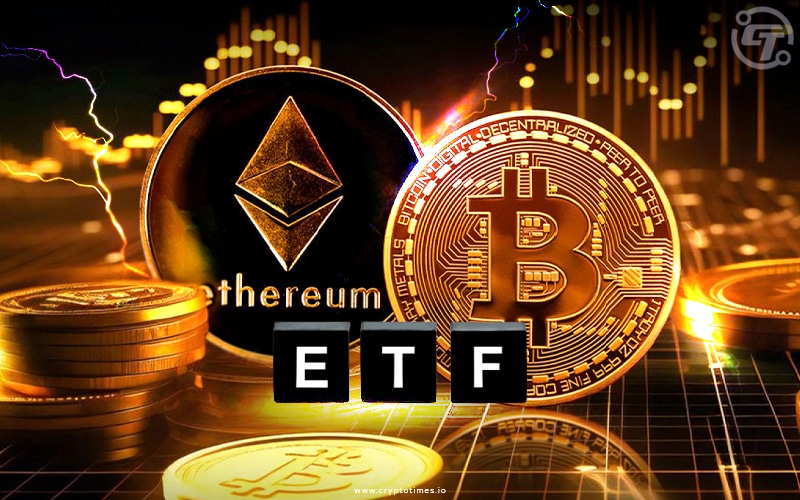With financial news today usa live at the forefront, we dive into the heart of the current economic landscape, where market movements and global events intertwine. From significant stock index shifts to the latest economic reports, this overview sets the stage for understanding how these elements impact investors and consumers alike.
Today’s headlines reveal a dynamic environment shaped by geopolitical tensions and regulatory changes, creating both challenges and opportunities in the financial markets. As we explore today’s trends, we’ll uncover key sectors experiencing growth and how they relate to broader economic indicators.
Current Events in Financial News
Today’s financial headlines in the USA are dominated by fluctuations in the stock market, spurred by a mix of economic reports and geopolitical tensions. Investors are closely monitoring the latest employment data, which has shown unexpected trends, leading to varied reactions across sectors. Meanwhile, international events continue to influence market sentiment, with rising oil prices and supply chain disruptions adding to the volatility.
Major Financial Headlines
The primary headlines shaping today’s financial landscape include:
- Stock market indices exhibit mixed results amid ongoing economic uncertainty.
- Latest unemployment figures show a slight increase, sparking concerns about future consumer spending.
- Geopolitical tensions in Eastern Europe are contributing to fluctuations in energy prices, affecting market stability.
Impact of Economic Reports
Recent economic reports have had a pronounced effect on the stock market.
- Unemployment rates unexpectedly rose to 4.5%, which analysts had not anticipated.
- This increase has raised concerns about consumer confidence and potential spending cuts.
- As a result, sectors such as retail and consumer goods are experiencing downturns.
Influence of Geopolitical Events
Geopolitical events are playing a critical role in shaping market sentiment today.
- Rising tensions in Eastern Europe are leading to increased oil prices, which in turn impacts transportation and manufacturing costs.
- Trade relations with key partners are also being scrutinized, contributing to market volatility.
- Investors are reacting to these developments by reassessing their portfolios and strategies.
Market Trends and Analysis
The stock market is witnessing notable trends today, with significant movements in various indices. The S&P 500 has seen fluctuations tied to the latest earnings reports, while the Dow Jones Industrial Average is fluctuating based on recent economic news and geopolitical factors.
Stock Market Trends
Key trends in the stock market today include:
- The S&P 500 has dropped by 1.2%, reflecting concerns over rising unemployment.
- NASDAQ is experiencing a slight gain, attributed to tech companies performing well amidst economic uncertainty.
- The Dow Jones has also seen a small decline, primarily influenced by energy sector pressures.
Sector Performance
Today, certain sectors are outperforming while others are struggling.
- Technology companies have shown resilience, with several major firms reporting better-than-expected earnings this week.
- Conversely, the energy sector is under pressure due to fluctuating oil prices.
- Financial services are also facing challenges as interest rates remain uncertain.
Earnings Reports
Major companies reporting earnings this week include:
- Tech giant XYZ Corp. exceeded expectations, boosting its stock price significantly.
- Retailer ABC Inc. reported a decline in profits, leading to a drop in stock value.
- Company DEF Ltd. showed mixed results, causing fluctuations in investor confidence.
Economic Indicators
Today’s economic indicators are crucial in assessing the overall health of the economy.
Significance of Economic Indicators
The release of key economic indicators today, such as unemployment rates and inflation data, has significant implications.
- Unemployment rates have risen, which could indicate a slowing job market.
- Inflation data shows a slight decrease, but concerns about future inflation persist.
- These indicators affect consumer confidence, which is vital for economic recovery.
Consumer Confidence and Spending
Consumer confidence is closely linked to economic indicators.
- As unemployment rises, consumer spending may decline, impacting overall economic growth.
- Stable inflation rates might encourage consumers to spend, despite rising unemployment.
- Overall, a cautious consumer outlook can further stall economic recovery efforts.
Federal Reserve Announcements
The Federal Reserve’s announcements today have implications for financial markets.
- Interest rates remain unchanged, indicating a cautious approach to economic recovery.
- The Fed’s commitment to monitoring inflation and employment rates will guide future policies.
- Market reactions to these announcements show investor anxiety regarding future economic stability.
Expert Opinions and Predictions
Financial analysts are offering insights into potential market changes in the coming weeks.
Insights from Financial Analysts
Experts are weighing in on the current market landscape.
- Analyst reports suggest caution in the stock market due to rising economic uncertainties.
- There are predictions of potential rebounds in the tech sector as companies adapt to market conditions.
- Some analysts believe that a swift recovery is possible if consumer confidence improves.
Institutional Predictions
Comparative predictions from various financial institutions indicate mixed outlooks.
- Institution A forecasts a significant uptick in the S&P 500 over the next quarter.
- Institution B predicts a more conservative market with limited growth.
- Institution C remains optimistic about technology and green energy sectors.
Expert Commentary on Investment Conditions
Experts emphasize the importance of strategic investing in the current environment.
- Diversification remains key to mitigating risk in a volatile market.
- Investors should look for opportunities in resilient sectors such as technology and healthcare.
- Staying informed about macroeconomic trends is crucial for making sound investment decisions.
Investment Opportunities
Today’s financial news reveals several potential investment opportunities.
Identifying Investment Opportunities
Investors should consider these opportunities based on current market conditions.
- Investing in technology firms that are showing strong earnings growth is advisable.
- Green energy companies are likely to benefit from changing economic policies.
- Consumer staples may provide stability amidst economic fluctuations.
Sectors Benefiting from Economic Shifts
Some sectors are poised to benefit from current economic trends.
- Healthcare and pharmaceuticals are likely to see increased demand as populations age.
- Technology is expected to continue thriving due to ongoing digital transformation.
- Renewable energy sectors will benefit from a shift towards sustainable practices.
Investment Strategy for Current Market
A focused investment strategy is essential for capitalizing on today’s market movements.
- Investors should maintain a balanced portfolio, reducing exposure to volatile sectors.
- Long-term investments in stable growth sectors may yield better returns.
- Regular monitoring of market trends and economic indicators can guide timely investment decisions.
Regulatory Changes
New regulations announced today are impacting financial markets.
New Regulations Impacting Markets
Recent regulatory changes are reshaping the financial landscape.
- New rules on financial disclosures are being introduced to increase transparency.
- Regulations targeting cryptocurrency trading are expected to be enforced soon.
- Changes in environmental regulations may affect energy and manufacturing sectors.
Effects on Investors and Businesses
These regulatory changes will have implications for investors and businesses alike.
- Increased transparency may boost investor confidence in the long term.
- Businesses may need to adapt quickly to comply with new regulations.
- Failure to meet regulatory requirements could lead to penalties and reduced market access.
The Role of Government Policies
Government policies play a critical role in shaping market conditions.
- Policies aimed at economic recovery will influence investor sentiment.
- Tax reforms may impact corporate earnings, affecting overall market performance.
- Investment in infrastructure could lead to growth in several sectors.
International Financial News Impact
Global financial news continues to influence U.S. markets today.
Global Financial News Impact on U.S. Markets
The performance of international markets is affecting the U.S. landscape.
- Global market trends are shaping investor sentiment in the U.S.
- Reports of economic slowdowns in major economies are causing caution among U.S. investors.
- Currency fluctuations are affecting trade balances and corporate earnings forecasts.
Comparative Market Performance
Comparing U.S. markets to international counterparts reveals notable differences.
- U.S. markets are experiencing more stability than some European markets, which are facing recession fears.
- Emerging markets are seeing growth, benefiting from strong commodity prices.
- Investors are diversifying into international assets to mitigate risks.
Currency Fluctuations and Trade
Currency fluctuations are impacting U.S. trade and finance today.
- The dollar’s strength is affecting export competitiveness.
- Companies reliant on imports are facing higher costs due to currency shifts.
- Investor strategies are adapting to the evolving currency landscape.
Last Point
In summary, today’s financial news provides a comprehensive view of the evolving landscape in the USA, highlighting critical indicators, expert predictions, and investment opportunities. Staying informed on these developments is essential for making savvy financial decisions and understanding the implications of global events on our local markets.
FAQ Section
What are the major financial headlines today?
Today’s major financial headlines include significant movements in the stock market, updates on unemployment rates, and the latest earnings reports from major companies.
How do geopolitical events affect U.S. markets?
Geopolitical events can lead to market fluctuations, impacting investor sentiment and causing shifts in stock prices based on perceived risks or opportunities.
What economic indicators should investors watch?
Investors should pay attention to unemployment rates, inflation data, and Federal Reserve announcements, as these indicators heavily influence market trends and consumer confidence.
What sectors are currently showing growth?
Sectors such as technology and renewable energy are currently experiencing growth based on economic shifts and evolving consumer demands.
How do currency fluctuations impact trade?
Currency fluctuations can affect trade by altering the cost of imports and exports, impacting overall profitability for businesses engaged in international trade.






